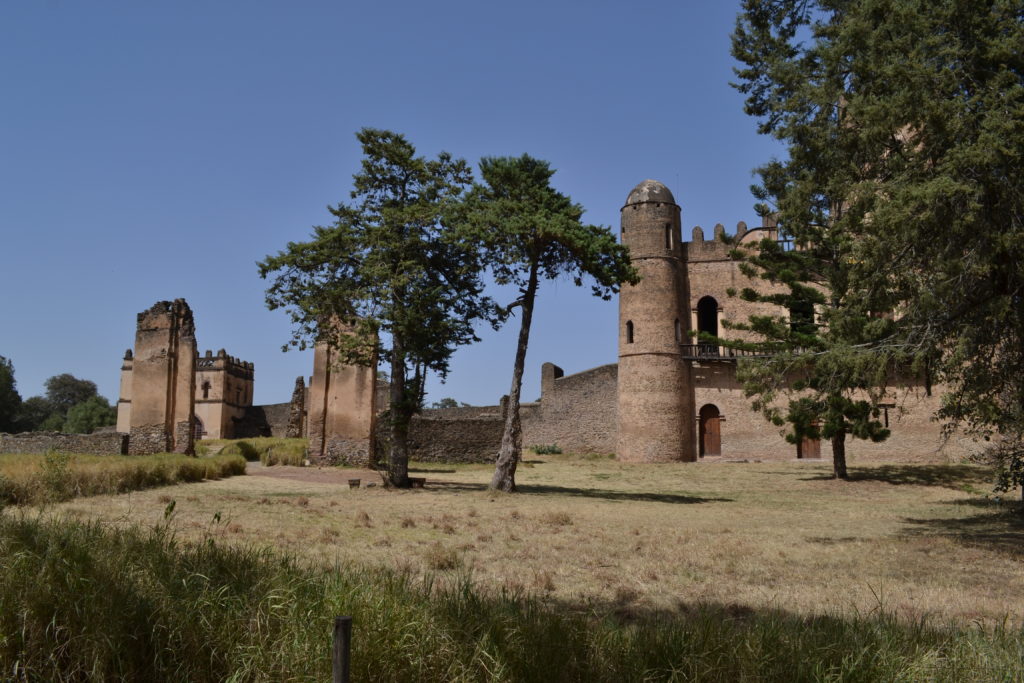Ethiopia: Gondar Castle and World War Two
June 22, 2017 - 2 minutes read
Gondar Castle today: Building on the right restored, structure on the left still damaged by British bombing. Photo by Joe Yogerst.
As we celebrate the 73rd anniversary of D-Day and the Normandy landings this month, it’s worthwhile to note that Ethiopia also played a role in World War Two.
The so-called Abyssinian Campaign — which played out between June of 1940 and November of 1941 — was an Allied effort to drive Mussolini’s fascist Italian army from Ethiopia, Somalia and Eritrea.
British forces led the charge, but troops from eight British African colonies, as well as India, Belgium, South Africa, France, Palestine and Australia were involved. And it was no small conflict — nearly a million troops took part on both sides.
Italy actually struck first, a surprise air raid on the Southern Rhodesian air force base at Wajir in northeastern Kenya. But the Allies quickly countered by invading the Italian colonies from Sudan and Kenya.
The “last stand” of the Italian forces took places in Gondar, the old imperial capital of northern Ethiopia. After ten months besieging the city, a combined force of British and Free Ethiopian troops attacked Italians holding the mountain passes around Gondar.
The last of the Italian forces, realizing the battle was lost, surrendered on November 27th. Although largely obscured by all that happened in later years, the Abyssinian Campaign was the first Allied victory of World War Two as well as the restoration of independent Ethiopia.
It also left a lasting mark on Gondar Castle, the city’s UNESCO World Heritage Site. British bombing raids on the Italian  military headquarters left much of the citadel in ruins. Some of the main buildings were reconstructed after the war, but others remain in ruins to this day.
military headquarters left much of the citadel in ruins. Some of the main buildings were reconstructed after the war, but others remain in ruins to this day.
Jacaranda Tours can arrange custom-made visits to Gondar and other places that featured in the Abbysinian Campaign, as well as guides that can spin tales of Ethiopia’s pivotal role in World War Two.
0 Comments